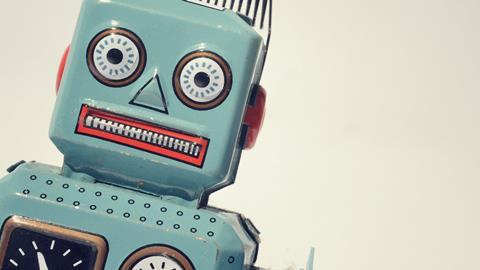Artificial intelligence and machine learning has been hailed as the saviour of broadcasting, but is the technology being applied in the right way, asks John Maxwell Hobbs.
Oxford Dictionaries perplexed a lot of people when it announced “youthquake” as the word of 2018.

For a lot of people, particularly in media, the smart money would have been on “artificial intelligence.” But they would be wrong – “machine learning” tops them all with 5.7 million references on Google, vs. 3.6 million for “artificial intelligence,” and a mere 2 million for “youthquake.”
Artificial intelligence is shaping up to be the saviour for broadcasting, replacing 3D, VR, 4K, and HDR. If the marketers are to be believed, AI will operate cameras, log rushes, edit programmes, schedule channels, replace performers, and even watch programmes for people who are too busy to watch themselves. But to what end?
The fantasy
This focus on AI in the popular imagination is understandable, with the several companies developing self-driving cars and high-profile figures from Elon Musk to Stephen Hawking warning of the dangers of AI.
I can’t help but feel, however, that the current handwringing about the impending robot apocalypse is driven more by technological hubris with a pinch of marketing:
‘Oh no! Because we are so amazingly talented, we have created computers that are so unbelievably powerful, even we are afraid of them!’
In fact, the general public’s experience with AI is probably best illustrated by the Burnistoun sketch about a voice recognition lift in Scotland in which the lift struggles to understand the Scotch accent, prompting attempts to mimic US and English accents increasingly frustrated .

The truth is much closer to VR pioneer Jaron Lanier’s prediction: “Just as some newborn race of superintelligent robots are about to consume all humanity, our dear old species will likely be saved by a Windows crash. The poor robots will linger pathetically, begging us to reboot them, even though they’ll know it would do no good.”
On a more prosaic level, the concept of an artificial intelligence that can perform human tasks appeals on a practical level – who wouldn’t like to have Rosie, the Jetson’s maid, to do the cooking, housecleaning, and all the other mundane tasks we’d like to avoid? Instead, we have to deal with the reality of what happens when you have both a robot vacuum cleaner and a dog.
The reality
As mentioned above, the term, “machine learning” is on the rise. That’s for a good reason. Artificial intelligence tends to be a term used more for its evocative quality, fitting in well with human beings’ tendency to anthropomorphise things, rather than being grounded in reality.
It’s fun to imagine conversational robots, humanoid robots with Austrian accents, and sarcastic androids with brains the size of planets.
”More effort should be focussed on the unsexy things that people are not good at – repetitive tasks like entering metadata, logging time, dates, and locations of rushes.”
“Machine learning,” on the other hand, sounds very dry and if it were a person would tend to be more of a swot than a leather-clad biker. In other words, not a lot of fun.
The aim of machine learning is to make it possible for an application to perform actions based on data-driven predictions

Most applications follow explicit instructions, and are therefore not suited for dealing with unpredictable variables. In the world of broadcasting, unpredictability rules, making traditional automation impractical. The recommendation engines used by companies like Amazon and Netflix use machine learning to make generalised suggestions based on analysis of the big data generated by the activities of their customers.
With shopping sites like Amazon, where the products are fungible, the range of variables are a bit less unpredictable, so the results are fairly good.
VoD services are another story altogether. Taste in music and video is extremely variable and wildly unpredictable. You and I might both love Doctor Who, whereas you might love Gogglebox, a programme that makes me want to throw my telly out of the window. No amount of data crunching will ever be able to predict that.
The right tool for the job
Archimedes famously said, “Give me a lever long enough and a fulcrum on which to place it, and I shall move the world.”
We use tools to extend our capabilities – a hammer is much better at driving a nail than a bare hand. Steve Jobs famously called computers, “a bicycle for our minds.”
We currently see media technology companies spending energy, time, and money attempting to apply AI and ML to solve problems that don’t actually exist.
There’s a huge focus on automating things like creating playlists, composing music, and operating cameras. These efforts are very showy, but totally pointless. These are things that humans are very, very good at.
More effort should be focussed on the unsexy things that people are not good at – repetitive tasks like entering metadata, logging time, dates, and locations of rushes, tracking attribution and copyright. Believe it or not, most businesses still do this by hand.
“Did you hear last night’s, Iggy Confidential ? It would have been so much better if a computer put together the playlist,” said no one ever.
As well as being a music producer and composer, John Maxwell Hobbs is a course leader at the National Film and Television School, media consultant and the former Head of Technology at BBC Scotland.




























No comments yet